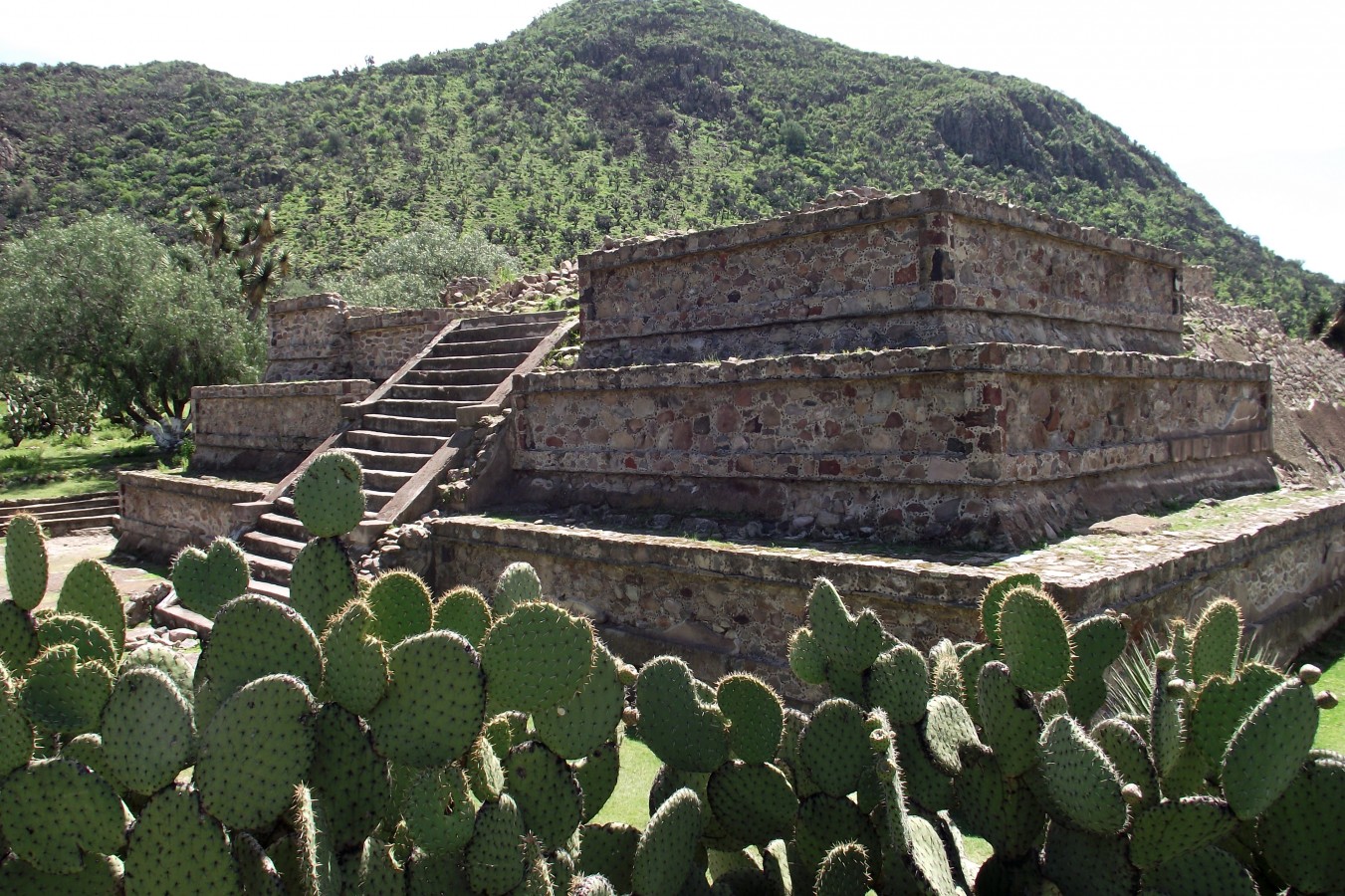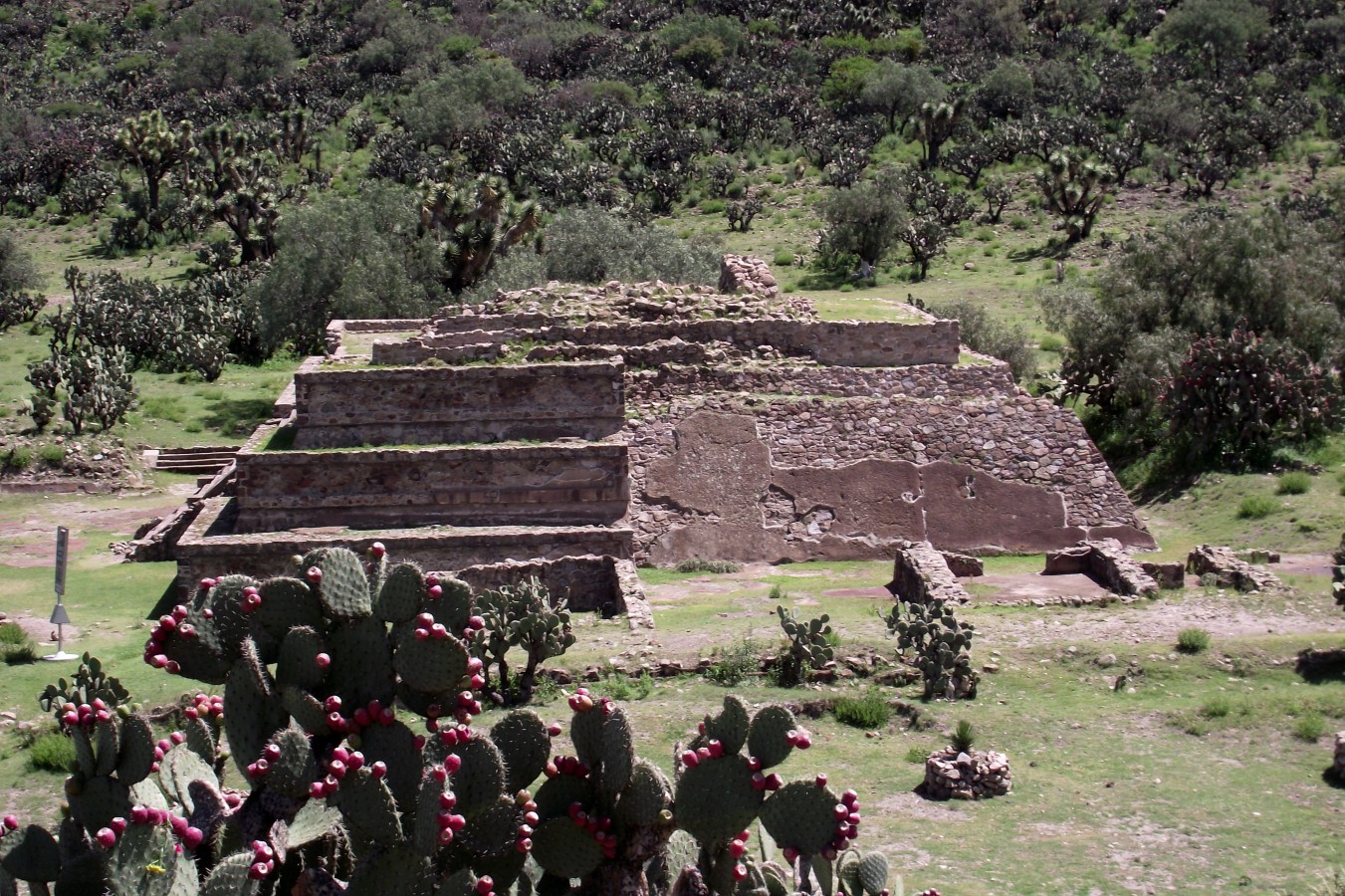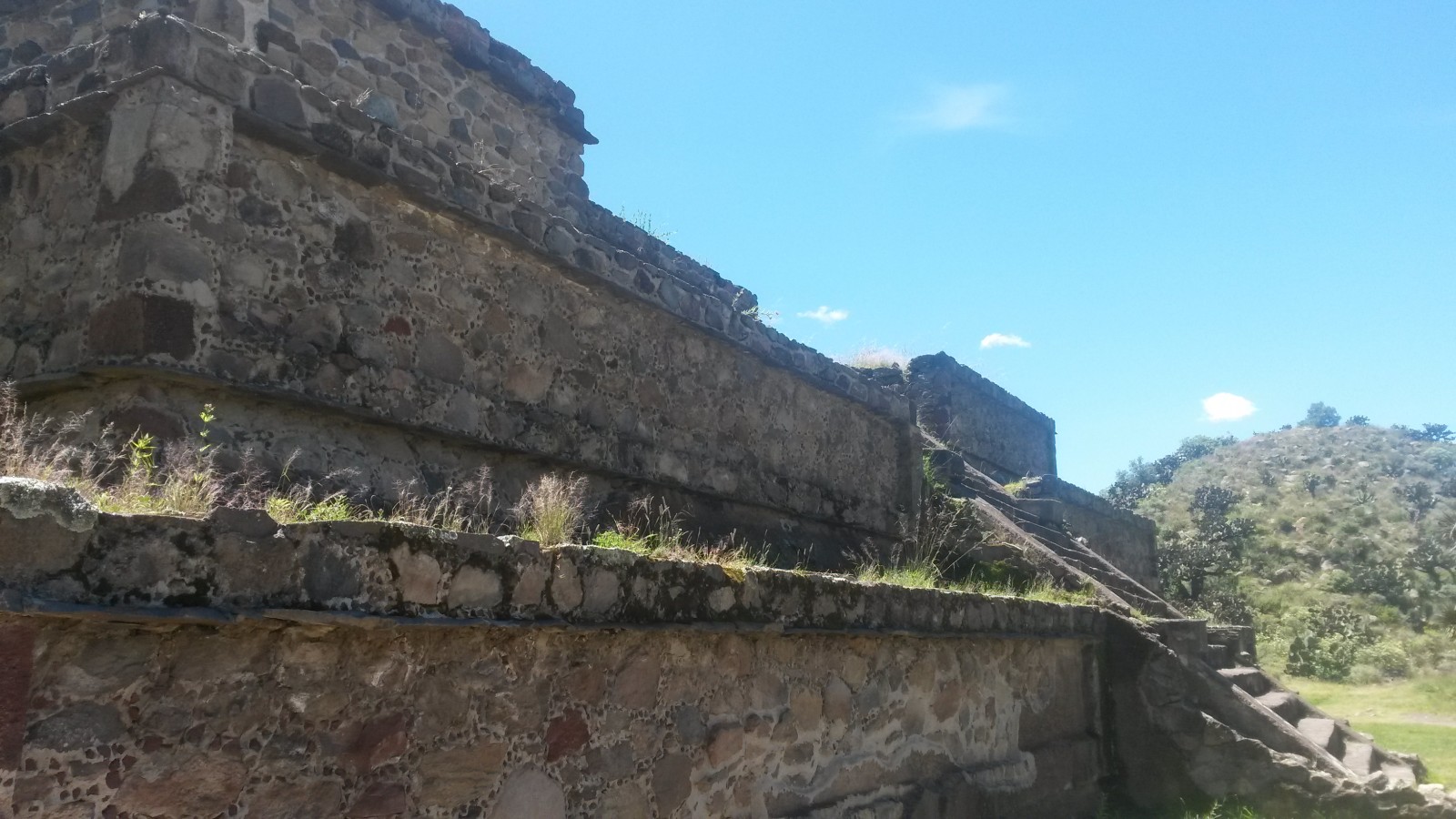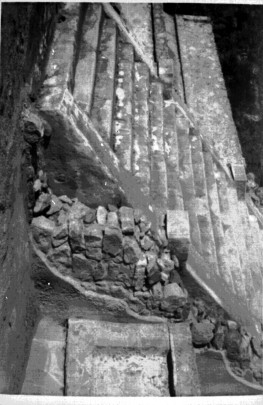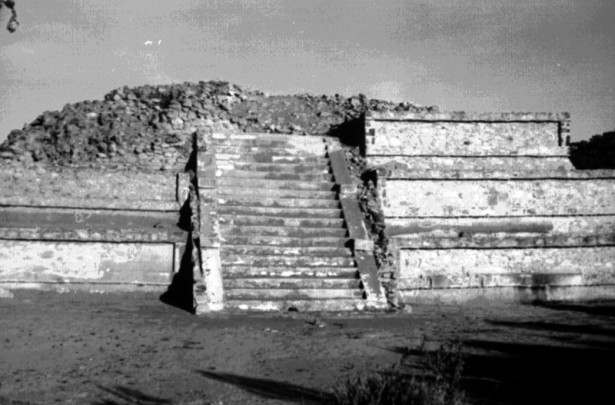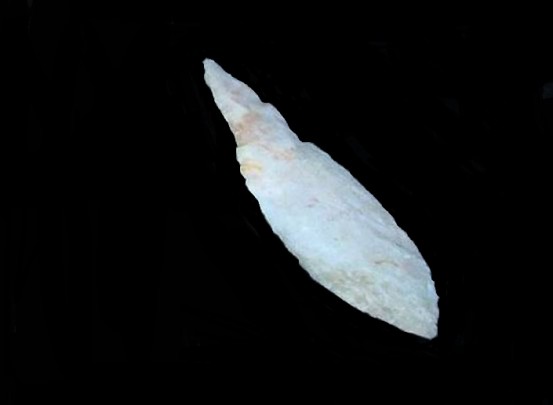Xihuingo
Place where the year is calculated
Ancient settlement of hunter/gatherers and farmers, founded twenty centuries ago, influenced by Teotihuacan. It became a distribution center for the Acolhua, situated between the Altiplano (high plateau) and the Gulf Coast. There are notable cave paintings at Tres Peñas and El Tecolote.
About the site
The site’s archeological monuments cover an area close to half a square mile. The site had three periods of occupation. Very ancient rock paintings in red pigment of hands, faces and simplified human figures are evidence of the site’s first human occupation. The second period, in the Classic from 200 to 650 AD, was the most important for the site. Xihuingo was at its peak in terms of size, as the majority of its monuments were built at this time. At this stage of the city’s development there were strong ties to the political, economic and cultural system of Teotihuacan, the most important archeological site of the Classic period in central Mexico. Teotihuacan connections are evident from the architecture, ceramics and the symbols used in rock paintings, particularly the pointed markers or crosses which originated in the city of the gods. The El Tecolote pyramid built at this time was said to have had an area of nearly 200 acres. In its third period, in the Late Postclassic from 1350 to 1519, Xihuingo was a dispersed settlement. As a predominantly rural satellite it lost the prestige of the ancient city. It was part of Acolhuacan, one of the three pre-Hispanic political regions of central Mexico, which paid tribute to the Aztec empire based in Mexico-Tenochtitlan.
1 - 750
Preclásico Tardío a Clásico Tardío
200 - 650
Clásico Temprano a Clásico Tardío
Did you know...
- During the maintenance work on the site at the end of 1997 a small rectangular stone box with a lid, known in Nahuatl as a “tepetlacalli,” was found inside the main pyramid. Inside the box there were round beads and a rectangular green stone plaque.
- A flint knife was found beside the box. The flint knife, stone box and its content were very probably the building’s dedicatory offerings.
- The El Tecolote pyramid was built on a north-south axis facing the peak of the nearby Cerro de las Ardillas, which has a great many rock paintings. The other side of the building is on an east-west axis, marking the limits of the solar solstices and even the movement of the moon. It would appear to have been oriented towards one of the stars in the constellation of Scorpius.
An expert point of view
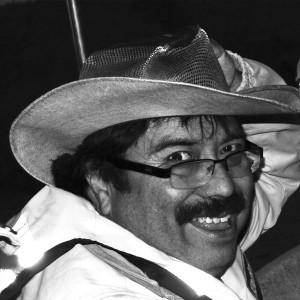
Alfonso Torres Rodríguez
Zona Arqueológica de Xihuingo (Tepeapulco)
Practical information
Monday to Sunday from 09:00 to 17:00 hrs.
Free entry
Se localiza a 3 km de Tepeapulco, al pie del Cerro Xihuingo.
Services
-
+52 (771) 714 35 20; +52 (771) 714 39 89
-
difusióThis email address is being protected from spambots. You need JavaScript enabled to view it.
-
WWW
-
FACEBOOK
Directory
Director del Centro INAH Hidalgo
Héctor Álvarez Santiago
This email address is being protected from spambots. You need JavaScript enabled to view it.
+52 (771) 714 35 20, ext. 228013

